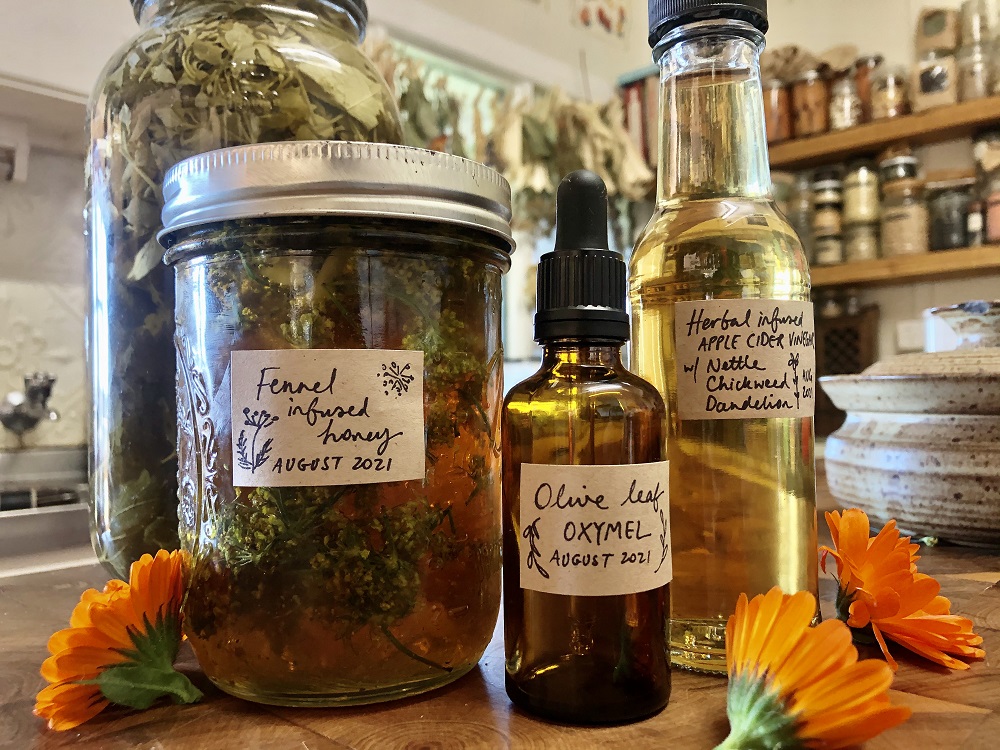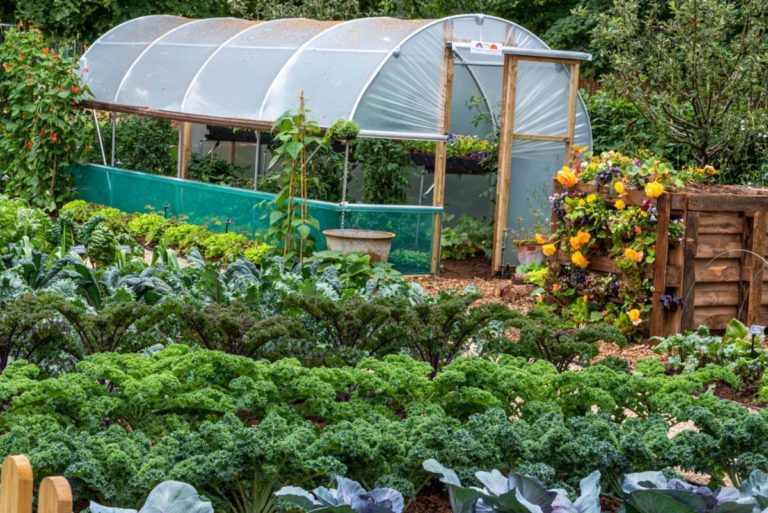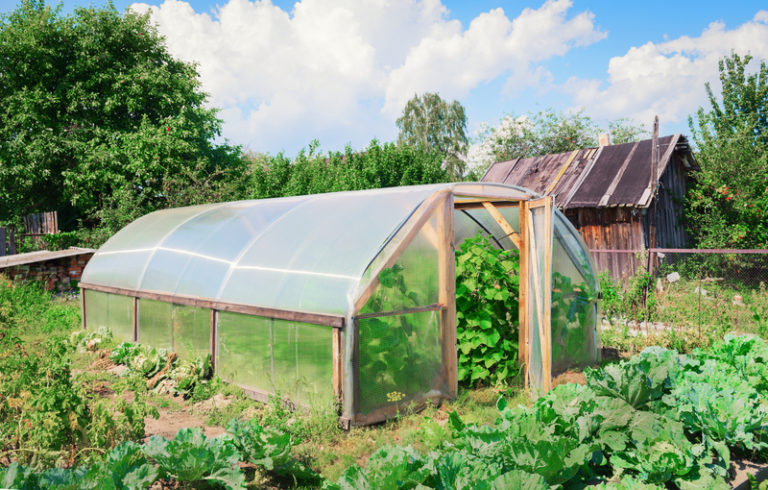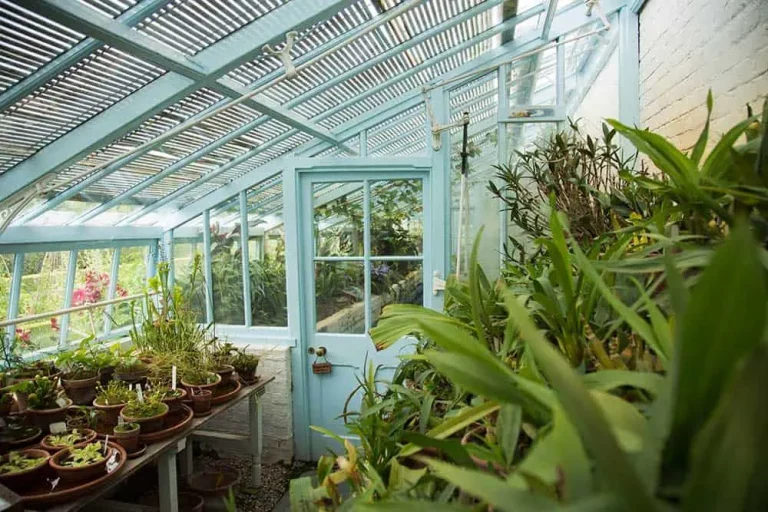Are you tired of relying on store-bought medications that can have side effects and don’t always address the root cause of your health issues?
Consider growing your own medicine cabinet instead!
By cultivating medicinal herbs in your backyard or indoor garden, you can create a natural and sustainable solution to common health problems.
With just a few simple steps and some basic equipment, you can start harvesting your own herbal remedies and enjoying the benefits of fresh, organic medicine.
We’ll show you how to grow and use medicinal herbs to take control of your health and well-being.
From soothing anxiety with passionflower to fighting off colds with echinacea, the possibilities are endless!
Start growing your own medicine cabinet today and experience the power of nature’s healing remedies for yourself.
Start small
Begin with a few easy-to-grow herbs like mint, basil, and lemongrass. These herbs are versatile and can be used in a variety of remedies.
Mint, basil, and lemongrass are ideal choices as they are not only easy to cultivate but also possess versatile properties.
Mint is known for its digestive benefits and can be used in teas, salads, and as a garnish.
Basil is an excellent source of antioxidants and can be added to soups, salads, and pasta dishes.
Lemongrass, with its citrusy flavor, can be used in teas, curries, and even as a natural insect repellent.
By starting with these easy-to-grow herbs, you can gradually experiment with more challenging herbs and expand your knowledge of herbal remedies.
Choose the right environment
Most medicinal herbs prefer well-drained soil and full sun. Choose a location that receives at least 6 hours of direct sunlight a day.
When selecting the right environment for your medicinal herb garden, it’s important to consider the preferences of the specific herbs you plan to grow.
Most medicinal herbs prefer well-drained soil and full sun, so choose a location that receives at least 6 hours of direct sunlight a day.
Avoid planting in low-lying areas where water may collect, as this can lead to root rot and other problems.
Instead, select a location with good drainage, such as a raised bed or a spot on a hillside.
If possible, choose a location with a southern exposure, as this will provide the most consistent sunlight.
Consider the microclimate of your location, as some herbs may prefer warmer or cooler temperatures than others.
By carefully selecting the right environment for your medicinal herbs, you can ensure they thrive and provide you with a bountiful harvest.
Use containers
If you don’t have a garden, consider using containers to grow your medicinal herbs. This way, you can still enjoy a bountiful harvest even if you have limited space.
If you don’t have a garden, using containers to grow your medicinal herbs is an excellent alternative.
Containers provide a controlled environment that allows you to grow a wide range of herbs, even in small spaces.
You can choose from a variety of containers, such as plastic pots, clay pots, or self-watering containers, depending on your preferences and needs.
By using containers, you can enjoy a bountiful harvest without worrying about the constraints of traditional gardening.
Containers can be placed on balconies, windowsills, or indoors, giving you the flexibility to grow your herbs in any space you have available.
Moreover, containers can help to protect your herbs from pests and diseases, as they provide a contained environment that is easier to maintain and control.
With the right care and attention, you can enjoy a thriving herb garden in any space, no matter how small.
Select the right herbs
Do some research to determine which herbs are best suited for your climate and health goals. Some popular medicinal herbs include lavender, chamomile, and echinacea.
When selecting the right herbs for your medicinal garden, it’s essential to do your research to ensure you choose varieties that are well-suited to your climate and health goals.
Some popular medicinal herbs that are easy to grow and provide a range of health benefits include lavender, chamomile, and echinacea.
Lavender is a hardy, fragrant herb that is known for its calming effects and ability to promote relaxation.
Its flowers can be used to make teas, tinctures, and topical salves, and it’s also a natural insect repellent.
Chamomile, on the other hand, is a gentle herb that can soothe digestive issues and promote restful sleep.
Its flowers can be made into teas, tinctures, and bath salts, and it’s also a natural anti-inflammatory.
Echinacea is a versatile herb that is known for its immune-boosting properties and ability to combat colds and flu.
It can be consumed in tea form, taken in capsule form, or made into a topical cream.
It’s important to choose the right variety of echinacea for your climate, as some varieties are more resilient to extreme temperatures than others.
By selecting the right herbs for your medicinal garden, you’ll be able to enjoy a bounty of fresh, organic, and naturally potent herbs throughout the growing season.
With a little research and care, you’ll be able to grow your own medicinal herbs and enjoy all the health benefits they provide.
Plant at the right time
Pay attention to the planting schedule for your region and plant your herbs at the appropriate time of year. Many medicinal herbs can be planted in the spring or fall when the weather is milder.
When it comes to planting medicinal herbs, timing is everything.
The ideal planting schedule for your region can be determined by consulting with local nurseries, gardening clubs, or checking online resources that provide information specific to your area.
In general, many medicinal herbs can be planted in the spring or fall when the weather is milder, allowing for optimal growth and thriving.
For example, cool-season herbs like chamomile, lemon balm, and mint can be planted in early spring as soon as the soil can be worked, while warm-season herbs like basil, lavender, and rosemary do best when planted in late spring or early summer once the danger of frost has passed.
In the fall, herbs like thyme, sage, and parsley can be planted about six weeks before the first frost date to allow for plenty of growth before the onset of winter.
It’s essential to note that specific planting times may vary depending on your location and the specific variety of herb you’re growing, so be sure to check the appropriate planting schedule for your region.
By paying attention to the planting schedule and planting your medicinal herbs at the appropriate time of year, you’ll be well on your way to cultivating a thriving and productive herb garden, providing you with an abundance of fresh, potent herbs for your medicinal needs.
Provide adequate care
Medicinal herbs require regular watering, pruning, and fertilizing. Make sure to water them deeply and frequently, especially during periods of drought.
To ensure the optimal health and potency of your medicinal herbs, it is important to provide them with proper care.
This includes regular watering, pruning, and fertilizing.
Watering is a critical aspect of herb care, as medicinal herbs require moist soil to thrive.
Water them deeply and frequently, especially during periods of drought, to prevent soil dryness and root damage.
Pruning your herbs regularly will encourage bushy growth, improve air circulation, and help prevent disease.
Fertilizing your herbs with a balanced organic fertilizer will provide essential nutrients for healthy growth and high-quality yields.
Harvest correctly
To ensure the potency of your herbs, it’s important to harvest them at the right time. For example, echinacea is best harvested when the flowers are fully open, while mint is best harvested just before the leaves reach their full size.
To ensure the potency of your herbs, it’s important to harvest them at the right time.
For example, echinacea is best harvested when the flowers are fully open, which is usually when they are in full bloom and at their most vibrant color.
This is because the flowers contain the highest concentration of active compounds, such as polysaccharides and glycosides, which are believed to be responsible for the herb’s medicinal properties.
On the other hand, mint is best harvested just before the leaves reach their full size, as this is when the leaves contain the highest concentration of essential oils and other active compounds.
If you wait too long to harvest the mint, the leaves may become too large and lose some of their potency.
By harvesting at the right time, you can ensure that your herbs are at their peak potency and effectiveness, and that you are able to extract the maximum amount of active compounds during the drying and storage process.
Dry and store properly
To preserve your herbs and extend their shelf life, dry them properly and store them in a cool, dark place. You can also make tinctures or teas from your herbs to enjoy year-round.
Drying and storing herbs properly is essential to preserve their flavor and extend their shelf life.
When herbs are dried slowly and gently, their delicate flavors and aromas are preserved, allowing you to enjoy them long after the growing season has ended.
To dry your herbs properly, use a food dehydrator or hang them upside down in a warm, dry place with good air circulation.
Avoid exposing your herbs to direct sunlight or high heat, as this can cause them to lose their flavor and aroma.
Once dried, store your herbs in a cool, dark place, such as a pantry or cupboard.
This will help prevent the herbs from losing their potency and developing off-flavors.
In addition to drying and storing your herbs properly, you can also make tinctures or teas from your herbs to enjoy year-round.
Tinctures are a concentrated form of herbal extract that can be made by soaking the herbs in alcohol or glycerin.
This allows you to preserve the active compounds in the herbs and enjoy them in liquid form.
To make a tincture, simply soak your dried herbs in alcohol or glycerin for several weeks, shaking the mixture daily.
Strain the tincture and store it in a dark glass bottle.
To make a tea, simply steep your dried herbs in hot water and enjoy.
You can also make herbal tinctures and teas from fresh herbs, but it’s important to dry them properly first to prevent spoilage.
Overall, drying and storing herbs properly is a important step in preserving their flavor and potency.
With the right techniques and tools, you can enjoy your herbs all year round and get the most out of your herbal garden.]]
Drying and storing herbs properly is an essential step in preserving their flavor and potency.
To begin with, it’s important to dry your herbs in a cool, dark place to prevent spoilage and off-flavors.
You can air-dry your herbs by tying them in small bunches and hanging them upside down in a warm, dry, well-ventilated area.
This method allows the herbs to dry slowly and maintain their natural aroma and flavor.
Alternatively, you can use a food dehydrator to dry your herbs more quickly and evenly.
Once your herbs are dry, it’s important to store them in a cool, dark place to prevent spoilage and off-flavors.
You can store your dried herbs in an airtight container, such as a glass jar with a tight-fitting lid, to maintain their flavor and potency.
You can also add a desiccant pack to the container to absorb any remaining moisture and keep your herbs fresh for longer.
Making tinctures is a important step in preserving your herbs’ flavor and potency.
A tincture is a concentrated liquid extract made from the herbs, and it can be used to make teas, elixirs, and other herbal remedies.
To make a tincture, simply soak your dried herbs in a high-proof spirit, such as vodka or rum, for several weeks.
Then, strain the liquid and discard the solids.
Your tincture is now ready to use in a variety of herbal remedies.
With the right techniques and tools, you can enjoy the many benefits of herbal medicine all year round.
] For those looking to preserve their herbs and extend their shelf life, drying and storing them properly is essential.
To ensure optimal preservation, it is important to dry the herbs in a cool, dark place, such as a pantry or cupboard.
This will help to prevent spoilage and maintain the herbs’ flavor and potency.
Storing the dried herbs in an airtight container, such as a glass jar with a tight-fitting lid, will help to keep them fresh for longer.
To make tinctures, start by soaking your dried herbs in a high-proof spirit, such as vodka or rum, for several weeks.
This will allow the herbs to infuse into the liquid, creating a concentrated extract that can be used in a variety of herbal remedies.
Once the soaking period is complete, strain the liquid through a cheesecloth or fine-mesh sieve to remove the solids, and discard the solids.
The resulting tincture can be stored in a dark glass bottle and used as needed.
With proper drying, storage, and tincture-making techniques, you can enjoy the many benefits of herbal medicine all year round.] Herbal medicine has been used for centuries to promote health and wellness, and with the right techniques, you can enjoy its many benefits all year round.
To preserve your herbs and extend their shelf life, it is essential to dry and store them properly.
Start by drying your herbs in a cool, dark place, such as a pantry or cupboard.
This will help to prevent spoilage and maintain the herbs’ flavor and potency.
Storing the dried herbs in an airtight container, such as a glass jar with a tight-fitting lid, will help to keep them fresh and prevent contamination.
Another effective way to preserve your herbs is to make a tincture, which is a liquid extract of the herbs’ active compounds.
To make a tincture, place the dried herbs in a cheesecloth or fine-mesh sieve and let the solids sit for a few hours or overnight.
Then, strain the liquid through the cheesecloth or sieve and discard the solids.
The resulting tincture can be stored in a dark glass bottle and used as needed.
Proper drying, storage, and tincture-making techniques are essential for preserving the quality and effectiveness of your herbal medicine.
With these techniques, you can enjoy the many benefits of herbal medicine all year round, whether it’s to improve digestion, boost immunity, or simply to enjoy a delicious and healthy cup of herbal tea.
Want More? Dive Deeper Here!
Hey there! If you’re the type who loves going down the rabbit hole of information (like we do), you’re in the right spot. We’ve pulled together some cool reads and resources that dive a bit deeper into the stuff we chat about on our site. Whether you’re just killing time or super into the topic, these picks might just be what you’re looking for. Happy reading!






